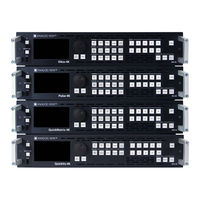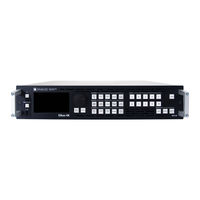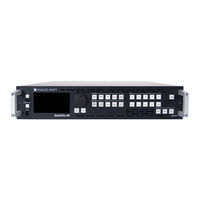Analog way QVU-4K Manuals
Manuals and User Guides for Analog way QVU-4K. We have 3 Analog way QVU-4K manuals available for free PDF download: User Manual, Quick Start Manual
Analog way QVU-4K User Manual (101 pages)
Brand: Analog way
|
Category: Switch
|
Size: 6 MB
Table of Contents
-
1 Disclaimer
10-
Copyrights10
-
Warranty10
-
Liability10
-
-
-
-
Power off21
-
-
General Tips25
-
-
-
Mixer Mode32
-
Matrix Mode32
-
-
-
9 Outputs
45 -
10 Inputs
47 -
-
3 Timers
58 -
-
5 Memories
66-
Memories Tab66
-
-
-
-
Appendices
99
Advertisement
Analog way QVU-4K User Manual (129 pages)
Brand: Analog way
|
Category: Media Converter
|
Size: 5 MB
Table of Contents
-
-
Warranty9
-
-
-
Power off20
-
-
General Tips24
-
-
-
Mixer Mode33
-
Matrix Mode33
-
-
-
9 Outputs
48 -
10 Inputs
51 -
-
-
3 Timers
63 -
-
5 Memories
74-
Memories Tab74
-
-
-
-
18 Streaming
91 -
-
Status94
-
Quick Access95
-
Preconfig96
-
Outputs98
-
Inputs100
-
Images102
-
Extra103
-
Services106
-
Control107
-
Multiviewer111
-
Screen Memories112
-
Appendices
120
Analog way QVU-4K Quick Start Manual (4 pages)
Brand: Analog way
|
Category: Media Converter
|
Size: 2 MB
Advertisement


